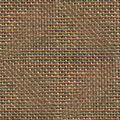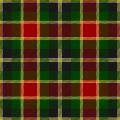Pepitatern

Pepitamønster, pepitatern[1] eller border-tartan er et stofmønster, der bruges i vævede stoffer, der historisk er forbundet med den engelsk-skotske grænse, især med kommunen Scottish Borders og Northumberland. Muligvis det mest genkendelige Border-tartan-beklædningsgenstand i regionen er mauden, der blev gjort populær fra 1820'erne af fashionable border-skotter som Sir Walter Scott, James Hogg, Henry Scott Riddell[2] og Robert Burns.
Pepitatern, pepitamønster formodes at være opkaldt efter den spanske balletdanserinde Pepita de Oliva (1830-1871).[3]
Referencer
- ^ denstoredanske.lex.dk: pepitatern, backup
- ^ Moffat, A. (2015). Scotland: A history from the earliest times. Edinburgh: Birlinn.
- ^ en.texsite.info: Pepita
| Spire |
| ||||||||||||||||||||||||||||||||||||||||||||||||||||
|
Medier brugt på denne side
Forfatter/Opretter:
- MacLachlan_hunting_tartan_(D._W._Stewart).jpg: Celtus
- derivative work: Rehua
A representation of the Maclachlan hunting tartan. This tartan is the oldest tartan to bear the name MacLachlan. This tartan is referred to as the Old MacLachlan, MacLachlan, and Hunting MacLachlan. This sett was first published in Old & Rare Scottish Tartans by D. W. Stewart in 1893.
Thread count: Y6, W4, Bk32, G32, Y6, W4, R48.
Sources: MacLachlan Clan Tartan WR1710 MacLachlan Hunting Tartan
Forfatter/Opretter: SoylentGreen, Licens: CC BY-SA 3.0
Hessian Fabric made seamless. It will serve to create a normal map in Blender.
Forfatter/Opretter: MartijnL, Licens: CC BY-SA 3.0 nl
Batik cloth purchased in Yogyakarta, Indonesia
D.A.R.E. T-shirt







